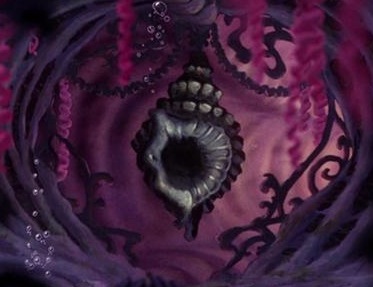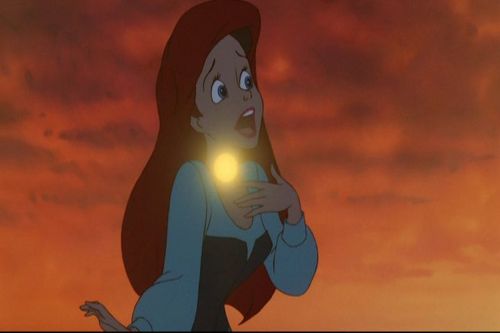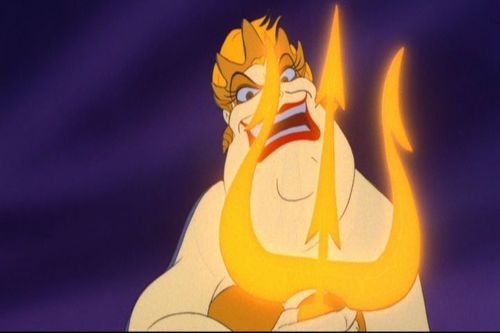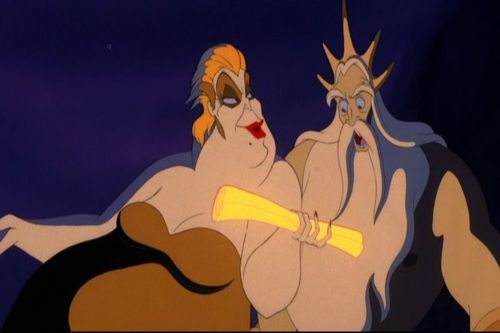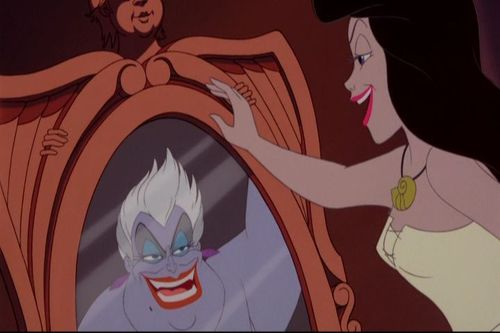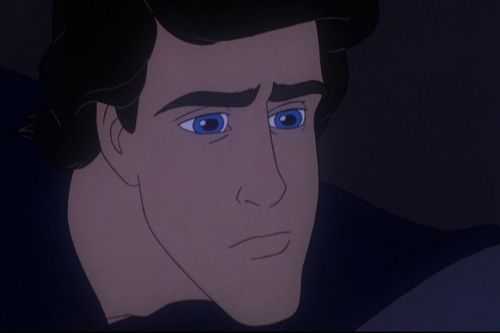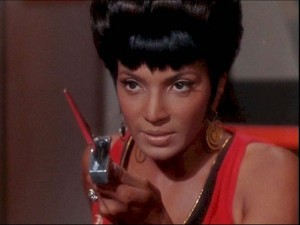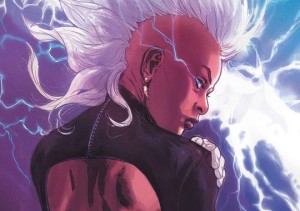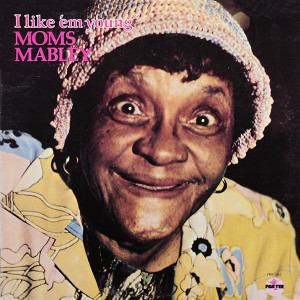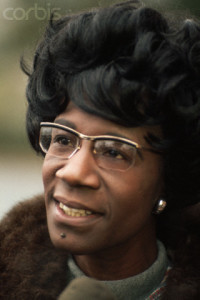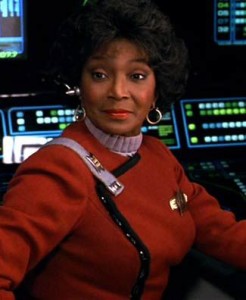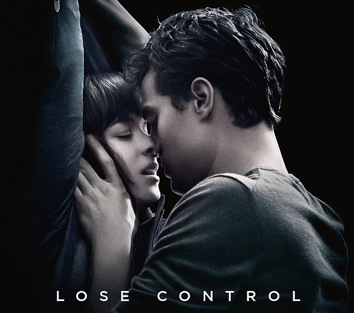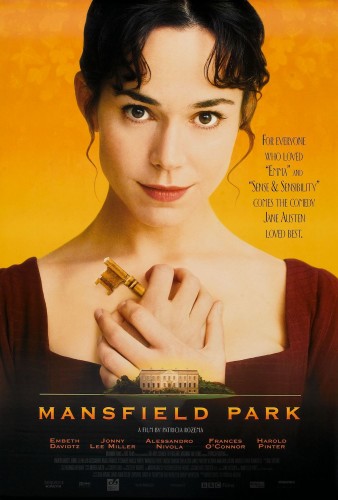
Written by Brigit McCone, this post is part of Vintage Viewing, our series exploring the work of women filmmaking pioneers.
When discussing opportunities for women and minorities created by new media, Kathleen Wallace highlighted the explosion of female directors at the birth of cinema, later squeezed out by the studio system. The list of vintage female directors is long, varied, and multinational. Yet, theorists like Laura Mulvey define feminist cinema by its resistance to the Male Gaze™, virtually ignoring the precedent of the female gaze. When was the last time we watched vintage female-authored films and discussed their art or meaning? Bitch Flicks presents Vintage Viewing – a monthly feature for viewing and discussing the films of cinema’s female pioneers. Where better to start than history’s first film director, Alice Guy?
Alice Guy may be compared to Ada Lovelace, who published the original computer program and first predicted the wider applications of computing. Like Lovelace, Guy was the pioneer who envisioned the future of her field. Like Lovelace, her legacy is only now being reappraised after decades of neglect. Though Guy’s memoirs indicate she may have directed the world’s first fiction film, her massive output, estimated at almost 1,000 films, is really more remarkable for its overall grasp of film’s potential, both technical (hand-painting color film, pioneering the close-up, synchronized sound, and special effects such as superimposition) and in establishing tropes from melodrama to comedy to action to suspense.
Click here to watch an excellent youtube documentary.

Alfred Hitchcock once cited two thrilling early influences: D. W. Griffith and Alice Guy. But Guy wasn’t simply an influential pioneer who happened to be female; she repeatedly challenged gender stereotypes in her work. Though sexologist John Money only coined the concept of a “gender role” in 1955, Alice Guy’s cross-dressing films were interrogating gender’s socially constructed nature 50 years earlier.
Pierrette’s Escapades – 1900
“We have often turned away from the exploration and consideration of the erotic as a source of power and information, confusing it with its opposite, the pornographic.” – Audre Lorde
Pierrette’s Escapades is one of the hand-painted demonstration films that Alice Guy produced for Gaumont in France, before her move to America. This film is particularly interesting for probably containing cinema’s first lesbian kiss. Guy recognized the power of representation, not only for queer visibility, but with 1912’s affirmative Jewish narrative A Man’s A Man, and cinema’s first Black cast in that same year’s A Fool and His Money, a story of hustling and hard luck inspired by blues narratives. Within a lushly tinted, escapist sensuality, the women of Pierrette’s Escapades play roles from anarchic Commedia dell’Arte and carnival traditions. As such, their flirtations and kisses can be explained by the established relationships between these stock characters, but Guy has taken conventionally heterosexual love scenes and reimagined them with an all-female cast.
The femme Pierrette, in her throbbing pink dress, resembles a coquettish Columbine, the trickster wife of sad clown Pierrot, and mistress of witty Harlequin (the 16th century’s Bugs Bunny). As rivals, Harlequin and Pierrot represent the two faces of love, its triumphs and disappointments. The film opens with Pierrette reveling in her costume and powdering herself for Harlequin. A figure sidles into frame, in the traditional costume of Pierrot. Pierrot’s baggy clothes and white-powdered face make it difficult to identify the figure’s sex, who clumsily moves to embrace Pierrette, while she dodges impatiently, before Pierrot steals a kiss on her bare shoulder. Pierrette angrily orders her husband/wife to bed and primps for Harlequin. In the skintight, checkered costume and hat that identify the character, Harlequin is unmistakably feminine. In contrast to her coerced affection with Pierrot, Pierrette blossoms with female Harlequin, swooning and spinning before melting into her arms. Guy cuts the film at the moment of their kiss, leaving it open-ended and suggestive.
Pierrette’s low-cut bodice and the raising of her skirts mark this film as teasingly erotic for the time. Records indicate that Guy filmed cinema’s first striptease three years before Pierrette’s Escapades. Since the forced hypersexuality of women on film has become an expression of male control, modern feminists often read such images as objectifying. It’s worth remembering that a female director, Lois Weber, filmed the first female full-frontal, while Mae West provoked the paternalist Hays Code with her sexual frankness. The eroticism of Pierrette’s Escapades is a reminder of the liberating power of playful, sexual self-representation. Like the suffragettes, who wore lipstick as a symbol of defiance, it challenges sexless definitions of feminist orthodoxy. Isn’t viewing female bodies only from the imaginary perspective of an objectifying Male Gaze™ itself oppressive? Soundtrack suggestion: Cyndi Lauper, “Girls Just Want To Have Fun“ [youtube_sc url=”https://www.youtube.com/watch?v=xeByzgJFLMs”]
Walk in the sun
The Consequences of Feminism – 1906
“Femininity, if one still wants to call it that, makes American women a target and a victim of the sexual sell.” – Betty Friedan
Alice Guy’s work regularly explored the status of women. She moulded Vinnie Burns into cinema’s first action heroine, and depicted women in traditionally male professions such as magicians and dog-trainers. In 1912’s Making an American, “Ivan Orloff and his unhappy wife” represent a caricature of East-European cultures of wife-beating – Orloff’s wife is yoked to his wagon as a beast of burden. When the couple emigrate to America, Guy shows Americans constantly intervening to correct Orloff’s treatment of his wife, presenting resistance to domestic abuse as an American value fundamental to the “Land of the Free.” 1914’s The Lure was a sympathetic examination of the forces pressuring women into prostitution. Nevertheless, many feminist viewers struggle with Guy’s 1906 farce, The Consequences of Feminism, an apparently reactionary nightmare in which feminism creates a world of “sissified” men, who rebel by reclaiming their clubhouse and toasting the restoration of patriarchy. Discussing Pamela Green’s Guy documentary Be Natural, Kristen Lopez concludes this film depicts “the bad side” of feminism, before apologetically suggesting “the very idea that a woman was exploring social issues in a time when women weren’t allowed to vote is astounding”. Is this really all that can be said? That it’s cool to see a woman having enough of a voice to argue against women having more of a voice?
The Consequences of Feminism does not depict a society on the verge of collapse, it depicts straightforward role reversal. In her lost 1912 film In The Year 2000, Guy also reverses gender roles, with Darwin Karr playing the objectified “Ravishing Robert”. This anticipates later female authors who used sci-fi to interrogate gender, such as Charlotte Perkins Gilman with 1915’s Herland, or Ursula LeGuin with 1969 Hugo and Nebula prize-winner The Left Hand of Darkness (off topic: am I the only one shipping the Wachowski siblings to adapt?). Compare “Turnabout Intruder,” the genuinely reactionary 1969 finale of the original Star Trek series, which used role reversal to attempt to discredit second-wave feminism. In “Turnabout Intruder,” Dr. Janice Lester voices feminist grievances: “your world of starship captains doesn’t admit women,” before swapping bodies with Captain Kirk and attempting to command. Kirk shows calm authority in Lester’s body, while Lester is emotionally incapable of handling Kirk’s command and “red-faced with hysteria.” As “Turnabout Intruder” shows, discrediting feminism through role reversal requires a demonstration that women are incapable of performing male roles.
The Consequences of Feminism, by contrast, uses a farcical depiction of feminist rule to demonstrate that, while women thrive in male roles, men could not endure Friedan’s “sexual sell” of trading desirability for loss of power. Male viewers are confronted with a vision of themselves as passive “Ravishing Roberts” who must feign sexual resistance to preserve their reputation, laboring in domestic servitude while women supervise at their leisure. Society’s devaluing of domestic labor is shown by the women ridiculing their clubhouse’s sole washerman and pelting him with linens. If male viewers are relieved by the ending, in which a father revolts against a woman who disowns her child, and leads the men in storming the women’s clubhouse, they must acknowledge that collective rebellion against oppressive female roles is justified. Guy’s tongue-in-cheek film is the opposite of stereotypical, humorless feminism, but it demolishes the illusory power of “feminine mystique” just as effectively, as relevant for today’s MRA as for the chivalry of Guy’s own era. Soundtrack suggestion: Missy Elliott, “Work It”
[youtube_sc url=”https://www.youtube.com/watch?v=bIPMbkHQO3w”]
Put my thang down, flip it and reverse it
Algie The Miner – 1912
“We’ve begun to raise daughters more like sons… but few have the courage to raise our sons more like our daughters.” – Gloria Steinem
As a subversive populist, Guy was a master of the bait-n-switch. In 1913’s Officer Henderson, she offers audiences macho police officers dressing as women to catch crooks, the joke being the ridiculous juxtaposition of their fighting skills and feminine image. Then, at the end of the film, Guy substitutes the police officer with his wife, who reveals equal skill in tackling the crook. Officers watch and laugh at their supposed crony brawling in drag, but Guy’s real joke is revealed to be on the men themselves, for assuming that women are incapable of violence or self-defense.
Algie the Miner‘s IMDb entry lists Guy as “directing supervisor” and producer to Edward Warren’s director, at a time when the distinction between producer and director was ill-defined. Her fingerprints are all over the film, however, which she’s often credited as directing. Algie the Miner offers the joke of a flamboyant “sissy” man, contractually obliged by his future father-in-law to “prove himself a man” in rugged Western pursuits, but this is only the bait-n-switch for Guy’s critique of toxic masculinity and homophobia. Rugged pioneer Big Jim gives Algie directions to a frontier town and Algie kisses him in gratitude, leading to an explosion of violent insecurity from Jim. After discovering how non-threateningly puny Algie’s gun is, Jim thaws and agrees to become his mentor in manhood, settling into a cohabiting relationship whose separate beds recall Sesame Street‘s Bert and Ernie. Despite Algie’s female fiancé/beard, Algie the Miner is celebrated as a milestone in the history of gay cinema. When shown his separate bed in Big Jim’s cabin, Algie appears to lean into Jim suggestively before being rebuffed, giving grounds to view him as bisexual. As such, Algie’s final empowerment is gay-affirmative, as well as vindicating feminine values.
Though the rugged pioneers howl with laughter and ridicule Algie’s tiny gun, his willingness to kiss larger men demonstrates an effortless physical courage greater than that of his sexually insecure cowboy hosts, anticipating Marvel’s Rawhide Kid. Over the course of their relationship, Big Jim will teach Algie manly skills, but Algie will rescue Jim from ruinous machismo, nursing the alcoholic through his delirium tremens, saving Jim’s life from robbers and bravely defying the macho peers who pressure Jim to drink. Algie’s resistance to peer pressure, as well as his self-sacrificing nurturing instinct, vindicate feminine courage in the face of macho weakness. When Algie plans to return and claim his bride, Jim is visibly downcast until offered the chance to accompany him. Every Big Jim needs an Algie. The film ends with Algie “proving himself a man” by forcing his future father-in-law to bless his marriage at gunpoint. Closing with the father-in-law’s terror, the viewer must question whether such stereotypical masculinity is truly superior. In all, Alice Guy’s Algie the Miner offers cinema’s most affirmative portrait of male femininity until Billy Wilder’s Some Like It Hot. Soundtrack suggestion: Hole, “Be A Man” [youtube_sc url=”https://www.youtube.com/watch?v=FCYYa0WxLXA”]
I’m potent, yeah
After almost single-handedly inventing the language of narrative cinema, Alice Guy mentored director Lois Weber, whose blockbusting success ushered in the golden age of female filmmakers in Hollywood. Next month’s Vintage Viewing: Lois Weber, Blockbusting Boundary-Pusher. Stay tuned!
Brigit McCone may now officially be an Alice Guy fangirl (Guynocentric?) She writes short films and radio dramas. Her hobbies include doodling and making bad puns.
